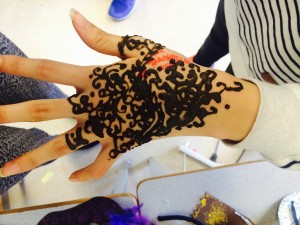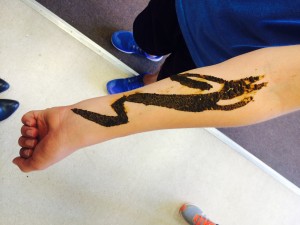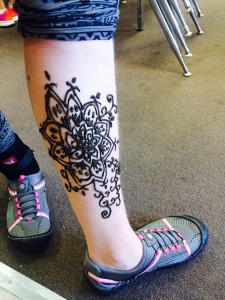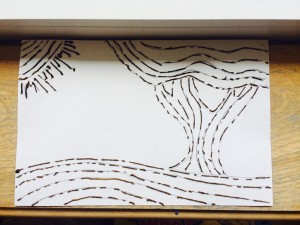The TOC day was an extremely valuable experience for me because it was sort of like a sneak peek into future reality. That is, in the near future, as a new teacher, life will pretty much be like the TOC day. Going into a new class of students, a new school, even quite possibly a drastically new community on a day to day basis. I have to say, it was a little nerve racking the night before but at the same time it was exciting. It is exciting in the sense that, as a TOC in different classes, you will almost never have the same two days. In the most basic sense, there will most likely be new students to teach, a new grade level, even a new classroom atmosphere. Can you just imagine the possibilities, they are endless!
I think for me, it was a little nerve racking because I knew I was going to be spending my day in a primary level class. Not only was that a drastic change from my upper intermediate class, but it was also different from my preference of an intermediate class. So I was thinking, can I really do this? My first plan of action was to keep the confidence I have in my own class, and second remain calm. I believe These “two C’s” – confidence and calm were really important for my TOC day and generally as a TOC in the future. A teacher once told me, being confident is key, because if you are not confident, the students will literally be able to smell your anxieties or fears. So, I think if you are conveying to the students you are not ready for the day, that will in a sense rub off on the students as well. Imagine being a student, and you notice your teacher is not very comfortable in his/her role, chances are this will throw you off, affect your learning. As a result, I will always have these “two C’s” in the back of my head as a teacher, not only for myself but more importantly for the benefit of my students.
The biggest difference I noticed between primary and intermediate – probably the most obvious – is the amount of guidance and instruction required. When I was thinking back to this difference after school on the TOC day I realized I almost treat my grade sevens like university students. I can explain concepts and ideas to them and then expect them to work on their own. Even when I am circulating in the class, most students do not require my help. For example, I am able to give the grade sevens their own inquiry project into Greece and they are able to come up with ideas that I feel I could not even produce myself. In the primary level, there is much more guidance required if you, the teacher, expect students work to be a certain way. For example, with something like spelling or grammar work, depending on the reading level of the class, the teacher needs to go through all the reading with the class. Instructions must be made directly clear to the students, even if they are written on the board or a worksheet, the teacher will almost always have to verbally review expectations beforehand. That being said, coming back to inquiry projects. After doing some thinking, I realized, if expectations are not completely fixed to be a certain way, a simplified form of inquiry is possible at the primary level as well. Yes, definitely the content and work produced will be extremely different from the intermediate level. However, it will still be something the students have created on their own, with a different type of guidance from the teacher.
This then made me realize again the importance of adapting and flexibility. This is so crucial as a TOC. You need to be ready to make the jump from kindergarten one day to grade six the next day. My SA gave me an excellent strategy to use as a TOC, which I used this past TOC day. At the beginning of the day, you write on the board “surprise” or “free time.” You explain to the students that this is something they can earn, a surprise or free time. However, if at any point the teacher thinks the students are not behaving as expected, whatever the expectations might be, a letter comes off. But these letters can be earned back as well – almost like a game, which I think is so motivating for the students. The point is to keep all the letters or a certain number of letters to earn the given reward. This works well for a TOC, because the strategy will probably be new to the students whereas in a regular class, using this strategy over and over would not make it as effective. So, whenever I found the students were misbehaving, I would just remind them of the word on the board, and this helped get them back on track. In the end, they were deserving of their surprise, and they got to to choose from pencils I had brought.
Being in the primary class also taught me a lot about myself. Although I have gone into primary classes before to cover preps, this was different as it was a whole day. I got to see my more nurturing side come out. I was much more patient with the younger students as I had to guide each student in different ways. Where in the grade seven class I usually guide students in relation to the content, in the primary class there was a lot of behaviour related guidance as well. For example, asking students to sit a certain way, waiting for their parents after school, helping students get ready for recess and lunch and so on. I almost felt like a mom to 22 little kids. This was something I had not really experienced before and I really enjoyed it!
In the end, I think this day was really enjoyable for me because it not only was a learning experience for the future but it also allowed me to reflect on myself as a teacher and my abilities. I now realize that with flexibility and new strategies, I am able to bring out my more nurturing side and apply this in conjunction with my teaching. I’m very thankful to have had this opportunity!



